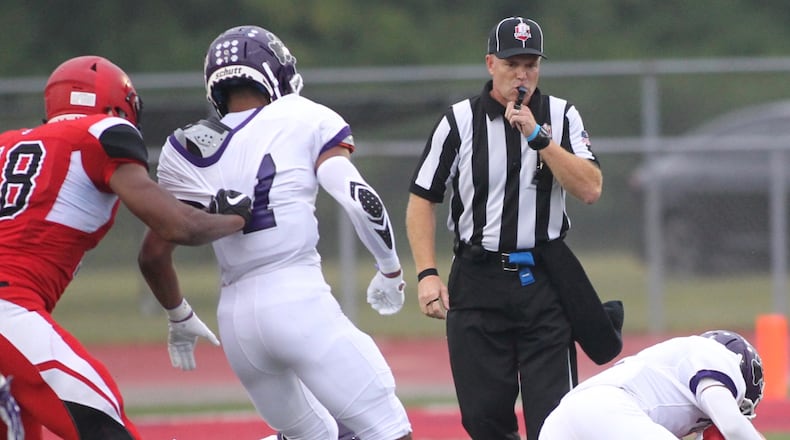“We’re hoping to hit these high school kids,” McNeil said. “They can earn $25 to $30 a game. It takes maybe an hour or an hour and 15 minutes. Those guys go to McDonald’s and flip a burger, and they’re making $9 an hour. This is a good way to get spending money and get great experience. If they go to college, they can take their officiating license with them and do intramurals and games in whatever city they go to. If they stay local, they can continue to grow and eventually work up to high school and varsity games.”
» HIGH SCHOOL FOOTBALL: State poll | Week 7 schedule | Week 6 Roundup | Week 6 scores, boxes
Anyone interested can sign up for the classes by clicking the officiating tab at OHSAA.org. The Springfield class costs $125 and will be held from 6-9 p.m. Mondays and Thursdays through Nov. 22.
“The great thing about it is you graduate the week the (basketball) season starts,” said Kevin Forrer, the assignor for the Greater Western Ohio Conference. “We purposely do that so they can start doing games right away. You can graduate and the next day you can work as many games as you want.”
While Ohio has over 17,000 licensed officials in all sports, according to a Twitter post by OHSAA Executive Director Jerry Snodgrass in April, most officials are age 50 and over. Snodgrass described it as an “officiating crisis.” The average age of basketball officials is 49. For baseball, it’s 50. It’s 51 for football and soccer, 56 for softball and 57 for volleyball.
The number of new officials has not kept up with the number of retiring officials. From 2008-11, Forrer welcomed 75-100 new officials into the business every year. Now he gets 30-35 new officials every year. He would like the number to move closer to 60.
The lack of officials hits all sports at all levels but affects the lower levels the most.
“It’s a trickle-down effect,” Forrer said. “Varsity is always taken care of first, no matter what. Then JV, freshman, junior high and the kids games. Depending on the level of the kids game, if it’s a rec league and we’re short, they’re going to go down to one official (in basketball) instead of two.”
There are 617 licensed basketball officials in Ohio, said Casey Lee, the president of the Southwest Ohio Officials Association. That number stood at 920 in 2010-11.
» CROSS COUNTRY: Tipp boys, Troy girls win Miami County titles
Convincing new officials to take on a job in which they will have to deal with angry fans and coaches is part of the challenge.
“I think part of it has to come with maturity and the fact that when you’re an official on the court, you have to take responsibility for the game and own it,” Lee said. “You have to let the fan criticism go in one ear and out the other because you’re there to do a job and that is to enforce the rules of the game and make sure the game is played within the rules.”
Forrer has developed a thick skin over the years dealing the inevitable disagreements about calls.
“Every time you blow your while, 50 percent of the people aren’t happy,” he said. “What you realize, once you take the class, is most parents don’t know the rules.”
RELATED: Springfield last undefeated GWOC football team
Like McNeil, whose son Randon followed him into officiating, Forrer’s son Peyton also works games. He’s now a sophomore at the University of Tennessee and working a full varsity football schedule. One of the pluses of being an official is choosing the nights you work.
One problem with the officiating shortage, however, is some longtime officials have to work more than they would like to.
“We’re working four to five nights a week because there’s a lack of officials,” McNeil said. “It affects your home life, your family. You’re working (your day job) to 4 or 5 and then going right to the high school and sometimes not getting home until 9:30 or 10. We’re double dipping, getting games in the afternoon and games at night because there are not enough officials.”
About the Author

